AI Analysis of Shroud of Turin Blood Patterns Confirms Crown of Thorns Was Real
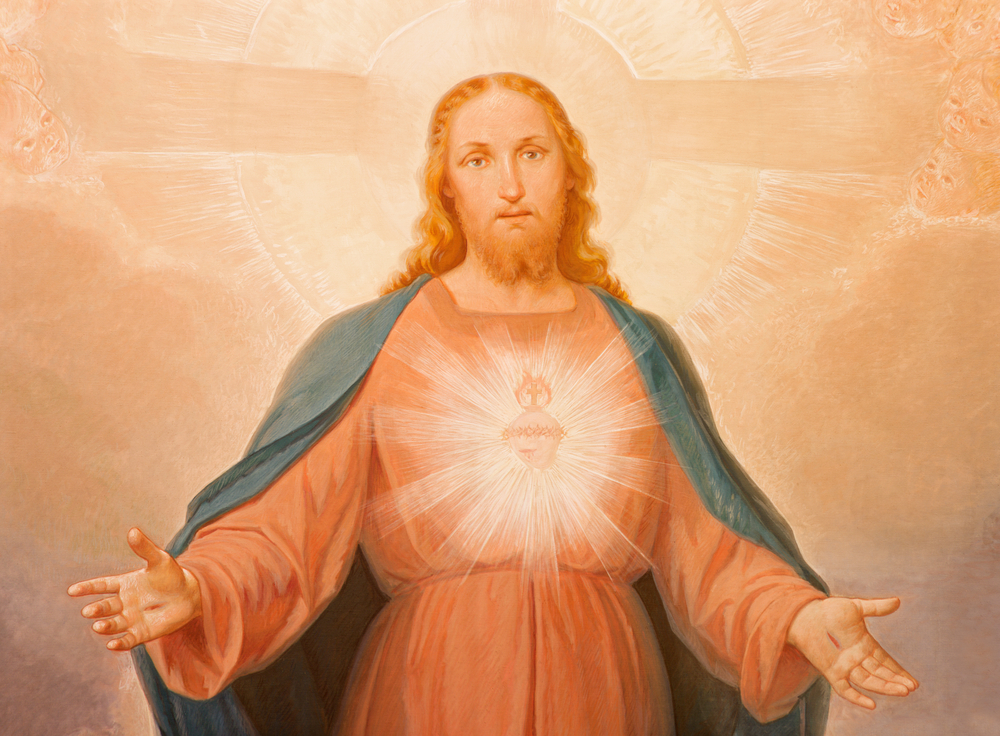
A centuries-old piece of linen has sparked fierce debate among believers, skeptics, and scientists for generations. Now, artificial intelligence has entered the conversation. What it found might change everything we thought we knew about one of Christianity’s most painful symbols.
Blood patterns don’t lie. When researchers fed images of an ancient burial cloth into AI systems, the technology mapped something extraordinary across the fabric. Wounds tell stories. Puncture marks whisper secrets. And according to one scientist, those secrets point directly to a crown made of thorns.
Meet the Researcher Behind the Study
Otangelo Grasso describes himself as a Young Earth Creationist and Intelligent Design proponent. His latest work dives deep into the Shroud of Turin, that controversial piece of cloth millions believe wrapped the body of Jesus Christ after his crucifixion.
Grasso didn’t just look at the shroud with his eyes. He deployed AI technology to create precise projections of the image outline. He mapped every visible wound. He traced every blood trail. His goal was clear. Could forensic analysis prove what faith has claimed for centuries?
Breaking Down the Crown of Thorns Theory
Biblical accounts describe Roman soldiers placing a crown of thorns on Jesus during his torture and execution. Artists have painted this scene for centuries. Believers have meditated on this suffering for generations. Yet art historians have questioned whether the entire depiction stems from a medieval mistranslation of scripture.
Some scholars argue that the bloodied crown imagery we see in churches and museums is merely a medieval invention. According to them, contemporary accounts of Jesus never mentioned such a device. Medieval artists, working from imperfect translations, may have created a powerful visual metaphor that became accepted as historical fact.
Grasso’s research challenges that skepticism.
How AI Mapped the Blood Patterns
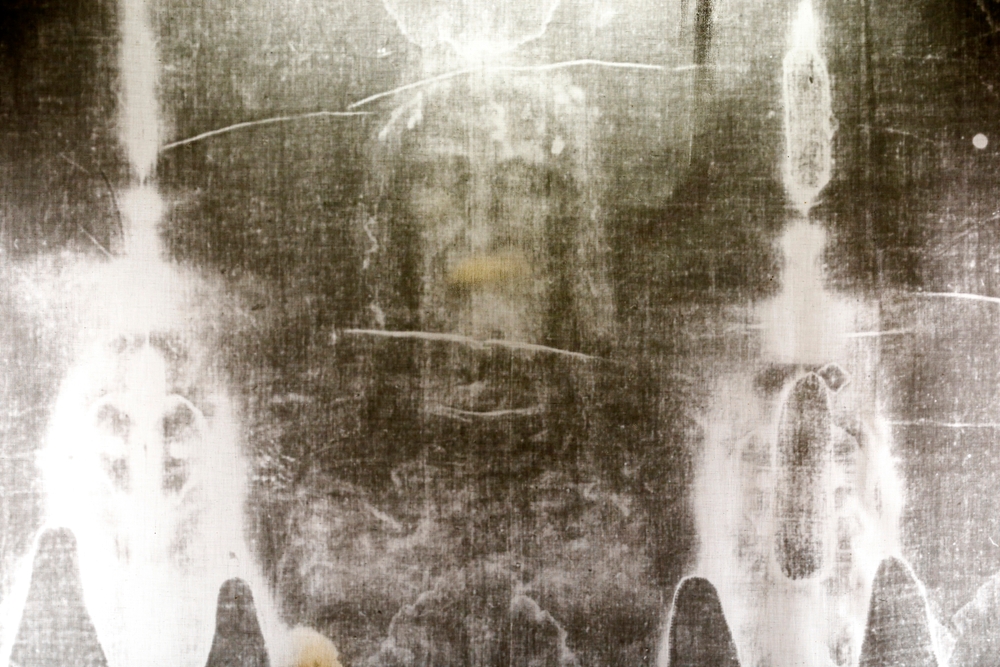
AI generated a detailed projection of the image outline on the shroud. Grasso then analyzed wound and blood pattern distribution across the entire head region. What emerged was striking.
Between 28 and 37 discrete puncture marks appeared across the visible anterior and posterior fields. Front patterns and back patterns showed a 15.7 centimeter gap at the vertex, the highest point of the head. Blood had transferred from nearly every part of the scalp to the cloth. Nearly every part except the very top.
Such precision matters. Each wound location provides a data point. Each blood trail offers evidence. When you map them all together, a picture forms. And that picture tells a specific story about what touched this person’s head.
Cap Versus Circlet: What the Wounds Reveal
Two possible crown designs exist in historical accounts. A helmet-style cap would cover the entire head like a dome. A circlet would wrap around the head at a lower position, leaving the crown of the skull exposed.
Grasso examined the wound patterns to determine which design fits the evidence. A helmet cap would create wounds across the entire scalp, including the top. Yet that clean vertex bridge, that untouched area at the crown of the head, suggests otherwise.
“A helmet-like dome implies frequent superior-scalp lesions; with other head wounds still transferring at burial, one would expect traces across the bridge. Their absence pushes the solution toward a low-seated circlet or shallow capiform wreath,” Grasso writes in his study.
Assembly time and manipulation factors also support the circlet theory. Weaving thorny branches into a complete cap would take considerable time and effort. A circlet requires fewer materials and less construction complexity. Roman soldiers, intent on mockery rather than craftsmanship, would likely choose the simpler option.
Blood Flow Tells a Story
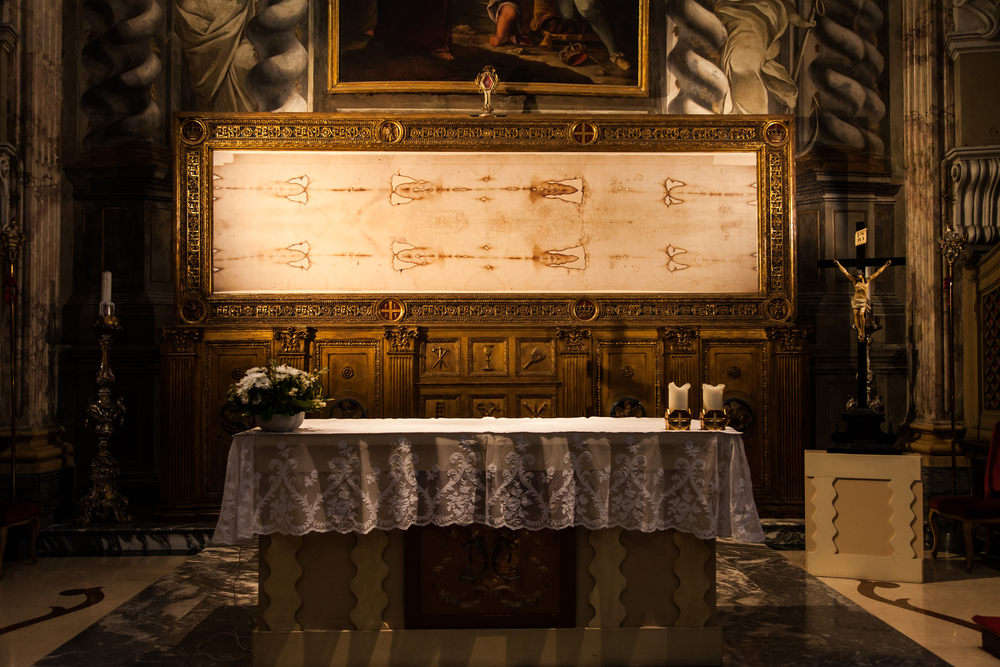
Blood doesn’t flow randomly. It follows gravity. It traces skin contours. It moves along furrows and folds in predictable patterns. Grasso’s analysis reveals that the crown compressed hair at the brow and temples. Inward-angled thorns created tangential entry wounds.
Vertical blood rivulets followed skin furrows down the forehead. At the temples, blood patterns matched the course of trigeminal nerve branches. Anyone who has experienced a migraine knows about the trigeminal nerve. It runs through the face and creates intense pain when irritated. Thorns piercing near those nerve pathways would have caused excruciating agony.
Forehead clots aligned with the nasion area, that small depression where the nose meets the forehead. Every detail matched what you would expect from a circlet pressing into the skull while thorns punctured the skin at multiple points.
“From the front, the crown sits below the apex and compresses the hair at the brow and temples; inward-angled thorns enter tangentially and create vertical rivulets that follow skin furrows and, at the temples, the course of trigeminal branches, echoing the Shroud’s forehead/nasion clots,” Grasso notes.
Identifying the Thorny Plant Species
Not all thorny plants work equally well for constructing a crown. Some have thorns too short. Others have branches too brittle. Grasso’s team screened Levantine thorn species to find the most probable candidate.
Ziziphus spina-christi emerged as the winner. Known commonly as Christ’s thorn jujube, it grows throughout the Middle East. Its characteristics align perfectly with the requirements for crown construction.
Paired stipular spines measure between 2 and 4 centimeters in length. Long enough to puncture skin and cause bleeding. Branchlets measure 0.6 to 1.0 centimeters in diameter. Thick enough to maintain structure. Most importantly, the material remains stiff yet pliable enough to bend into 3 to 4 structural coils.
Could Roman soldiers have gathered such branches near Jerusalem? Absolutely. Ziziphus spina-christi grows abundantly in that region, making it a readily available material for improvised torture devices.
Behind the Scenes: Research Methods
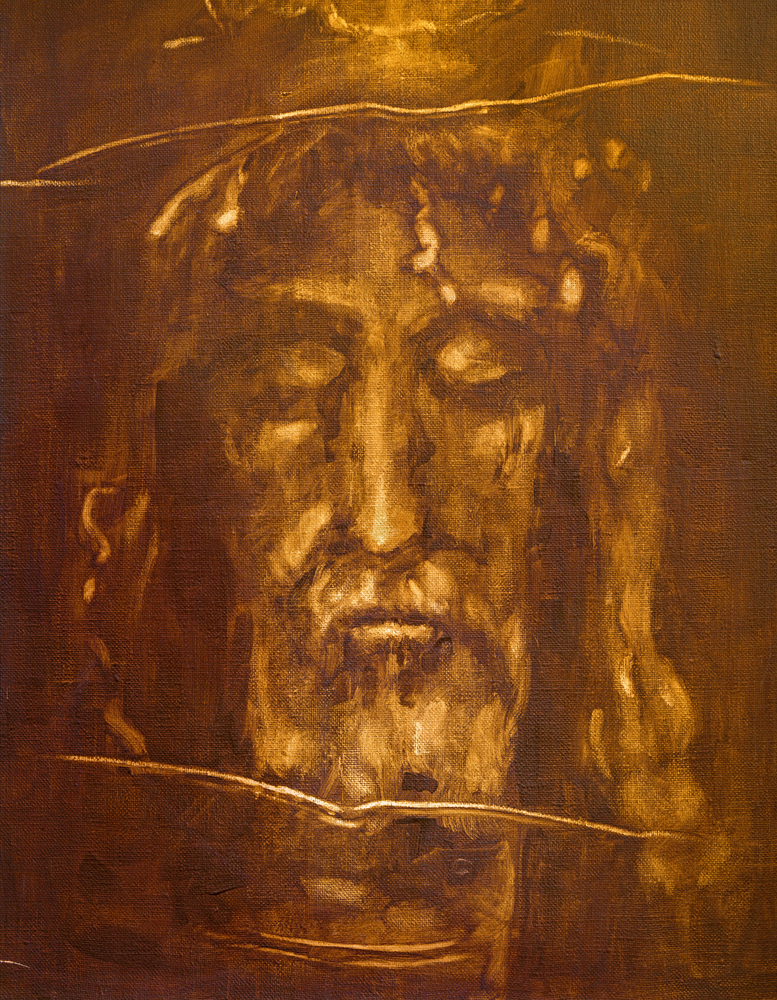
Scientific rigor requires more than observation. Grasso’s study mapped shroud head stains with meticulous attention to detail. He tested experimental inward-spine mechanics. He considered how posture would affect posterior elevation of the crown. He analyzed the differential between build time and manipulation requirements.
From all this data, Grasso created a parametric crown specification. Other researchers can now attempt replication. They can construct physical models matching the specifications and test whether such models produce similar wound patterns.
“Shroud head-stain mapping, a clean vertex bridge amid otherwise active head/face transfer potential, experimental inward-spine mechanics, posture-driven posterior elevation, and the build-time/manipulation differential together provide support for a circlet over a cap,” another study by Grasso concludes.
Shroud of Turin: A Contested History
Authenticity debates have plagued the shroud since its earliest recorded appearances. Records first mention the cloth in 1354, when a knight named Geoffroi de Charnay, seigneur de Lirey, possessed it. How he acquired it remains unknown.
When the shroud went on display in 1389, controversy erupted. Pierre d’Arcis, Bishop of Troyes, declared it a forgery. He claimed it was “cunningly painted, the truth being attested by the artist who painted it.” According to the bishop, a living artist had confessed to creating the image.
Even the Catholic Church maintained a cautious stance. Antipope Clement VII, during a complex period of competing papal claims, allowed devotional use of the shroud. However, he stopped short of declaring it authentic. His decree permitted people to venerate it only as an “image or representation” of Christ’s burial cloth, not the actual article.
Carbon Dating Contradiction
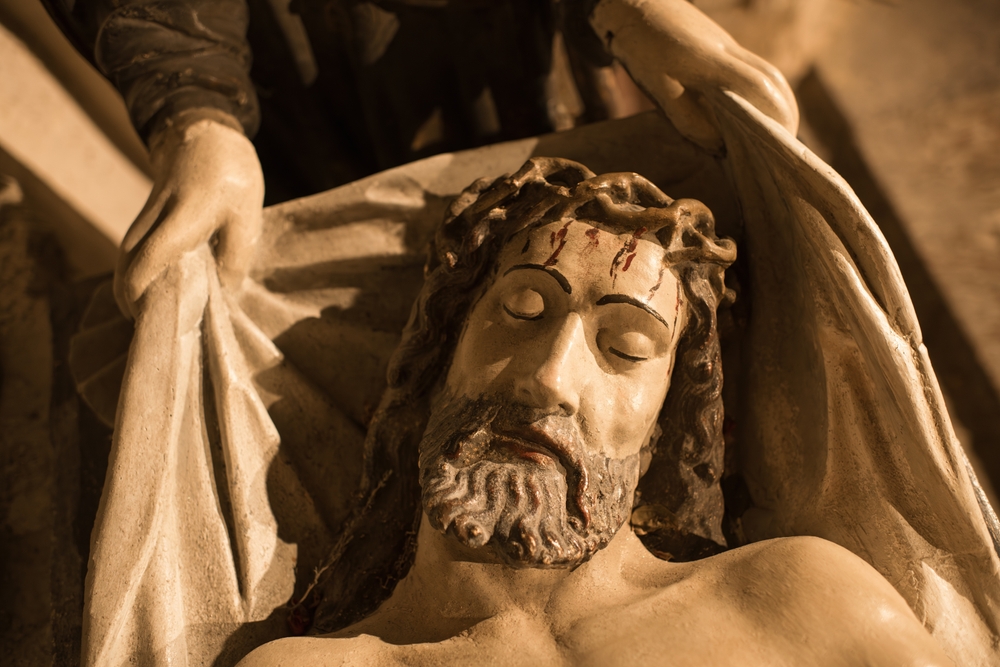
Science entered the debate in 1988. Three separate laboratories conducted radiocarbon dating tests on small samples of the shroud. Oxford University, Arizona University, and the Swiss Federal Institute of Technology all reached the same conclusion.
Tests placed the origin between 1260 and 1390 CE. Medieval period. Centuries after Jesus lived. Results appeared to settle the question once and for all. Scientific community largely accepted the medieval artifact classification.
Believers questioned the methodology. Perhaps the sample came from a medieval repair patch. Perhaps centuries of handling contaminated the fabric. Perhaps smoke from candles and fires altered the carbon ratios. Skeptics dismissed such objections as desperate attempts to preserve faith against evidence.
2022 Study Challenges Previous Dating
Science rarely offers final answers. New techniques emerge. Better methods develop. In 2022, researchers applied wide-angle X-ray scattering to analyze a fabric sample from the shroud. Results surprised many observers.
Analysis suggested the fabric originated between 55 and 74 CE. Right around when Jesus would have been crucified and buried. Dates fell within a reasonable margin for matching the traditional timeline.
Yet researchers acknowledged limitations. They needed further verification. They called for additional testing. Dates still missed by approximately 50 years. And fabric reuse remains a possibility. Ancient people often repurposed expensive materials like linen. Someone could have wrapped a body in first-century cloth during the medieval period.
Why This Discovery Matters

Grasso’s work adds a forensic dimension to theological debates. Crown of thorns imagery gains physical evidence backing. Medieval mistranslation theory faces a new challenge. Someone wearing something around their head left those marks. Blood flowed from puncture wounds in a pattern consistent with a thorny circlet.
Science applied to religious artifacts creates fascinating intersections. Faith asks for belief without proof. Science demands proof before belief. When forensic analysis supports traditional accounts, both sides must reconsider their positions.
Open Questions and Future Research
Dating discrepancies remain unresolved. Fabric authenticity still generates heated debate. Additional testing on the 2022 X-ray findings would help clarify timeline questions. Physical reconstruction of the crown based on Grasso’s specifications could enable experimental testing. More fabric samples might resolve dating contradictions.
Yet some questions may never receive definitive answers. Even perfect forensic evidence cannot prove supernatural claims. Even absolute dating precision cannot confirm religious significance. Science can tell us about materials, patterns, and timelines. It cannot tell us about meaning, purpose, or divine intervention.
What we can say is that something created those marks. Something thorny pressed into someone’s head. Blood flowed. A body was wrapped. And whether that body belonged to a carpenter from Nazareth or someone else entirely, the evidence speaks to suffering that transcends centuries and continues to provoke wonder, skepticism, and deep contemplation about human cruelty and redemption.
Research continues. Debate endures. And a piece of ancient linen keeps its secrets while slowly, forensically, scientifically, yielding them one blood pattern at a time.
Loading...

